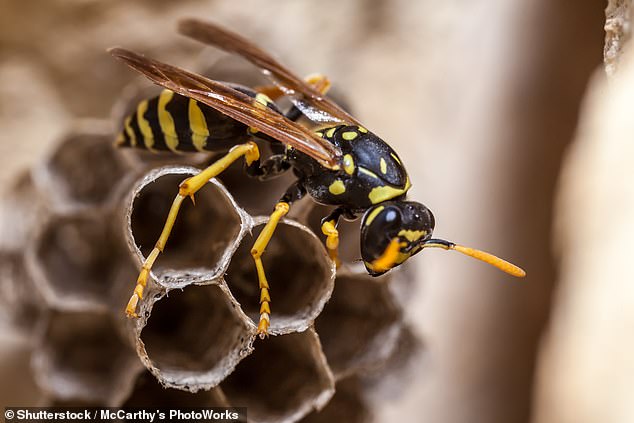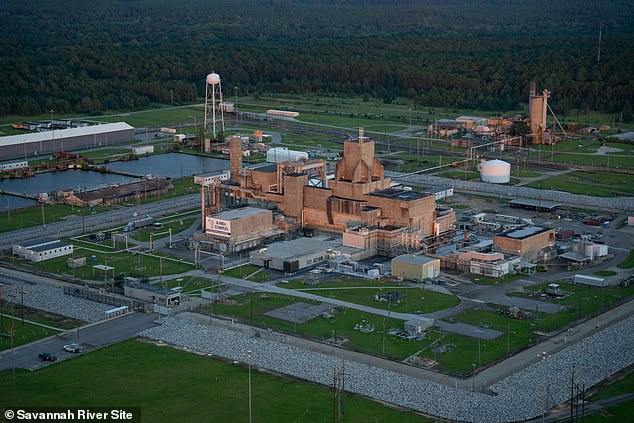A South Carolina city has been left rattled after a radioactive wasp nest was discovered at a former nuclear weapons site, yet no trace of the actual wasps has been found.
A new report from the US Department of Energy (DOE), released July 27, revealed that the nest was emitting radiation levels 10 times higher than what federal regulations allow.
The alarming find was made on July 3 at the Savannah River Site (SRS) near Aiken, where employees conducting routine checks stumbled upon the contaminated nest perched on a post near tanks storing liquid nuclear waste.
Officials stressed there was no leak from the nearby waste tanks, saying they believe the nest became radioactive due to ‘onsite legacy contamination.’
Legacy contamination refers to leftover radioactive residue from the site’s bomb-making days during the Cold War.
‘The wasp nest was sprayed to kill wasps, then bagged as radiological waste. The ground and surrounded area did not have any contamination,’ the report said.
A DOE spokesperson told NewsNation that if wasps had been present, they likely would have carried far less radiation than what was measured in the nest itself.
However, the watchdog group Savannah River Site Watch slammed the report as ‘incomplete,’ saying it fails to explain the source of the contamination, how wasps were exposed or if more radioactive nests may be hidden.

While officials said the nest has been disposed of, they noted that no wasps have been found (STOCK)
Tom Clements, executive director of the group, told AP: ‘I’m as mad as a hornet that SRS didn’t explain where the radioactive waste came from or if there is some kind of leak from the waste tanks that the public should be aware of.’
The tank farm is well inside the boundaries of the site and wasps generally fly just a few hundred yards from their nests, so there is no danger they are outside the facility, according to a statement from Savannah River Mission Completion which now oversees the site.
SRS, a 310-square-mile-site in Aiken, focused on the production of plutonium and tritium for use in the manufacture of nuclear weapons from its inception in the early 1950s until the end of the Cold War.
In 1992, the focus at SRS turned to environmental cleanup, nuclear materials management and research and development activities.
The site generated more than 165 million gallons of liquid nuclear waste which has, through evaporation, been reduced to about 34 million gallons, according to Savannah River Mission Completion.
There are still 43 of the underground tanks in use while eight have been closed.
‘Radiological Control personnel discovered a wasp nest in F Tank Farm at the Savannah River Site while performing routine radiological monitoring activities,’ according to a statement released by Savannah River Mission Completion.
The F-Area Tank Farm where the nest was found holds 22 massive underground tanks, each up to 100 feet wide and 23 feet deep, packed with between 750,000 and 1.3 million gallons of radioactive waste.

The radioactive nest was found at the Savannah River Site (SRS) near Aiken. Workers discovered it emitted levels 10 times higher than what is deemed safe
‘While no wasps were found on the nest, the individual insects would have significantly lower levels of contamination, Savannah River Mission Completion added.
The organization noted that ‘F Tank Farm is centrally located inside the 310-square-mile Savannah River Site. Generally, wasps travel only a few hundred yards from their nest.’
Officials admit the report on the wasp nest was delayed, citing the need to review past incidents involving contaminated wildlife and to meet strict federal reporting rules.
‘No further action was required in the field. There is no impact from event on other activities and operations,’ the DOE stated in the report.
